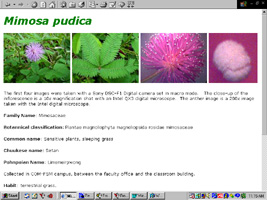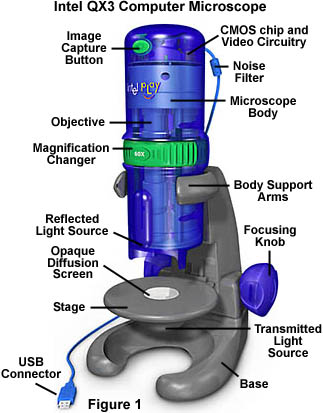
 |
College of Micronesia-FSM
|
| Computing · Directory · Home· Jobs · Library · News | |
| Micronescience: Extending the Capabilities | |
|---|---|
The Micronescience proposal has seen fruition in use in the College's Botany course, Marine Science courses, and in the Weather and Climate course. Some of the software and hardware acquired for the project has been used to support physical science laboratories and the dissemination of materials developed for the College and University Success Project.
 There remain two
areas of need in expanding upon the work done to date in building an online collection of
informational and support material for students.
There remain two
areas of need in expanding upon the work done to date in building an online collection of
informational and support material for students.
The first area of need is the lack of computers in the science laboratories. Without this hardware, students in laboratories cannot access the online material. Coupled with this is a lack of network connectivity in these science laboratories.
Connecting computers in the science lab rooms to the network is not likely to be feasible. As an alternative, the material in the Micronescience cyberlibrary will be transfered to CD-RW disks once a term using equipment being acquired for use by the faculty in the mathematics and science department. The CD-RW disks will then be kept in the science laboratories.
This proposal seeks to place two computers in the biological sciences laboratory and
one computer in the chemical sciences laboratory. This later laboratory is also used
by Microbiology as well as by Anatomy and Physiology. This placement would allow
another venue of access for the A&P students to the ADAM software that is being
acquired for that course.
The computers would have to be Windows 98 computers in order to support the equipment discussed further below. The computers should also have a 17" monitor for easier viewing by groups of students. For the display of science videos that are now becoming available, the computers should have DVD playing capacity as well.
A second area of expansion is in the acquisition of digital micrography. The current digital camera equipment has no magnification capacity of any kind. Imaging and capturing images that are microscopic is not currently possible.
During the past year digital micrography equipment was prohibitively expensive, with the camera alone ranging from $3000 to $5000. This price did not include a microscope. During the past year Intel has introduced a breakthrough product, the Intel QX3: a digital imaging microscope for only $75. This is made possible in part by advances in underlying CCD technologies and in part by offloading the processing work to a Windows 98 computer with USB ports. At this price the proposal is to equip all three computers with a microscope.
These digital microscopes would be used by faculty to present material to the students, and, more importantly, could be used by the students in project based laboratories. Providing tools to the students was one of the original intentions of the MicronescienceNet project. This technology would expand the reach of all of the cyberlibrary work down into the microscopic realm. The technology would be one more tool students could use when working on projects in the life sciences.